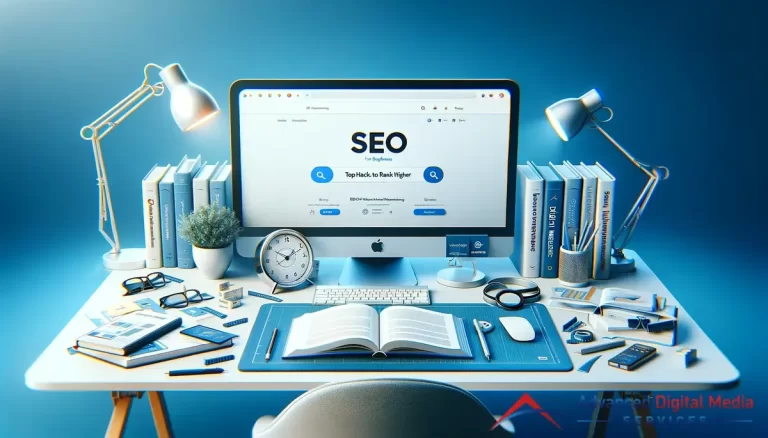Do you have a website for your thrift shop? It’s great if you already have one, but that’s only the first step. A website is only considered useful if it can easily be found on search results, so you need to have a plan for search engine optimization, also known as SEO. Contrary to popular belief, SEO isn’t just for big-box retailers with huge budgets. It benefits all businesses, even small ones that are in the booming resale industry.
The U.S. Census Bureau reports that resale store sales increased by more than 50% between 2008 and 2016. In the same period, revenues at discount department stores and traditional department stores fell by more than 50% and 25%, respectively. This trend seems to be driven by young shoppers. As proof, GlobalData research shows that large numbers of young shoppers are shopping for secondhand clothing.
There is a lot of potential in the resale market right now. However, it is important to consider the demographic driving the industry. It becomes clear that Gen Z and millennials live in a digital world, so your thrift shop needs to be prominent online. The good news? There are many ways to increase your online authority and drive customers to your thrift store. Here’s a complete SEO playbook for thrift store owners.
SEO SWOT Analysis
Before diving into our SEO playbook, you should first analyze your current SEO strengths, weaknesses, opportunities, and threats (SWOT).
If your resale shop already has a website, then you will want to begin this journey by conducting a SWOT analysis. While it’s a proven effective activity used by many entrepreneurs and agencies, this type of review can also be used for SEO purposes.
It can help you to understand your customers’ needs and determine if you are meeting them. It will help you determine where your attention should be if you’re not meeting those expectations.
The results you get from a SWOT analysis allow you to pinpoint the best areas to direct your SEO efforts, so resources and time aren’t wasted. Here’s a guide for you to look into:
Strengths
Begin with the positives. What are you doing well? You can easily identify your strengths.
Access to basic analytics tools is required to analyze your web activity. This is possible with free and budget-friendly tools, such as Google Search Console, Google Analytics, Moz, and Serpstat.
To determine your most effective SEO strategies, here’s a list of the things you should analyze:
- Your unique value proposition or the factors that make you stand out and are valued by your customers
- Keywords your rank for—ideally, those which appear on the first page
- Your content that ranks high on search results
- Your most-visited content
Weaknesses
Although it can be difficult to admit your weaknesses at times, it’s the only way to see the whole picture. Use the same analytic tools you utilize to identify strengths to look at internal obstacles.
Here are the factors to consider when identifying weak spots:
- Things your competitors are doing better
- Web page or content that fails to drive traffic
- Built-in SEO tools, such as Yoast SEO for WordPress, and if there are technical or budget limitations to them
- Money and time you are able to spend on SEO efforts
Opportunities
Your weaknesses can be turned into opportunities. This section will help you pinpoint where to focus your attention. But don’t overlook your strengths.
One blog post might be a strong one that describes how to care for vintage clothing. It ranks well and drives tons of traffic to your blog. However, it might still rank well and be a good opportunity to add product links, partnership mentions, or links to other relevant content.
Threats
Threats are usually external factors that are out of your control. However, this doesn’t mean that you shouldn’t take action.
Stay updated regarding industry changes and SEO trends. They can influence your SEO decisions moving forward. You’ll be interested in knowing if Google has changed its search algorithm to help you rank higher.
Keep an eye out for your competitors. You should know where your competitors rank for specific keywords. Pay attention to newcomers and how their online presence may affect yours.
Comprehensive SEO Playbook for Your Thrift Store
Now that you’ve completed a SWOT analysis, it’s time to discuss our SEO playbook. You might be wondering and asking the question, “What is an SEO playbook?” Basically, an SEO playbook is just a list of the SEO strategies you use for your thrift store. Ready? Let’s start!
You must speak the language of your customers if you are to craft your SEO strategies. Conductor’s chief evangelist, Stephan Bajaio, says that effective SEO strategies require extensive keyword research. You can duplicate the methods your audience finds you by doing in-depth keyword research. It helps you build on your existing success.
Once you have identified the most relevant keywords and keyword phrases, use them to implement the following SEO strategies:
1. Technical SEO
Technical SEO deals with the structure of your website. Take, for example:
- Is it easy for search engines to crawl your website?
- Are your web pages properly indexed?
- Does your website have a mobile-friendly design?
- Are your web pages fast to load, or are there plug-ins that slow it down?
These factors directly impact your search rankings. They make it easier or more difficult to find your store online. In other words, they make or break your strategy.
What you can do:
- Divide and conquer. Take a look at the structure of your web pages, starting with the homepage. If you sell shoes and clothing, you should have separate pages for each category. Next, add a prominent navigation tab to your homepage’s menu bar. Optimizing your website’s hierarchy can increase traffic and page visits and improve your search ranking.
2. Content
All the words that you use on your website are content, and content is how you communicate with your target audience about what you are selling and where it is sold. You can also use content to build your brand’s reputation.
Your focus as a thrift store owner should be to leverage user-generated content and offer informative blog articles that will engage potential customers. Optimize your blog content for search results. This means that you should include the keywords you found most relevant to your thrift store business.
What you can do:
- Encourage customers to leave reviews. Testimonials and reviews on your website are powerful content that instantly increases your store’s credibility. The best part? Testimonials are created by users, so you don’t need to write anything.
- Create blogs regularly. Blogs can be a great way to engage potential customers. They draw visitors to your site and then convince them to return again and again. These longer pieces of content offer the best chance to rank for long-tail keywords, which will give your website a higher chance of gaining new customers.
3. On-Site SEO
Optimizing your website’s specific features to increase its ranking on search engine result pages is called on-site SEO. These features include:
- We Pages
- Structure of Your URLs
- Titles
- Headers
- Alternate Text for Your Images
- Meta Descriptions
Some of these elements can already be automated by your website service provider. So, your energy should be directed towards your webpage content as a business owner. It is the best place to make the most of your search rankings and online presence.
What you can do:
- Expound your category pages. Once you have separated your website into “departments,” add content to explain each page. For example, your “shoes” page will discuss the selection and condition of secondhand shoes. The content should be evergreen. If you only sell winter boots, keep in mind that your boot selections are seasonal and only available in the colder months.
4. Off-Site SEO and Reputation Management
Any effort beyond your website’s domain to improve your search engine rankings is considered off-site SEO. This includes link building. Websites linking back to your site can help verify your authority.
Other effective SEO strategies that can be used off-page (or off-site) include guest blogging, managing reviews online and mentions of your company, and building relationships that will benefit your business. This could include networking with your local community or connecting with influential people. Each tactic is designed to build authority and a positive brand image.
What you can do:
- Verify all your information on the internet. Google My Business allows you to list your thrift store’s address, phone number, and business hours. You can also specify the payment methods that your store accepts. Although there is no cost for this service, owners of businesses must claim and verify their listing. To ensure accuracy, you must keep an eye on it.
Grow Your Business Through Top-Notch SEO
The resale market will be influenced by the younger generation of shoppers over the next five years. Your digital presence will be more important than ever with this new demographic. You should take advantage of every opportunity to grow your business. When you invest in SEO for thrift stores, you are setting your business up for success.
If you’re looking for top-notch SEO services, look no further than Advanced Digital Media Services. We have a team of Denver SEO experts to provide you with the services you need. Our team can create a customized SEO playbook for your business to ensure that you stand out among all your competitors.
Contact us today and get access to an exceptional SEO playbook for your thrift store!





